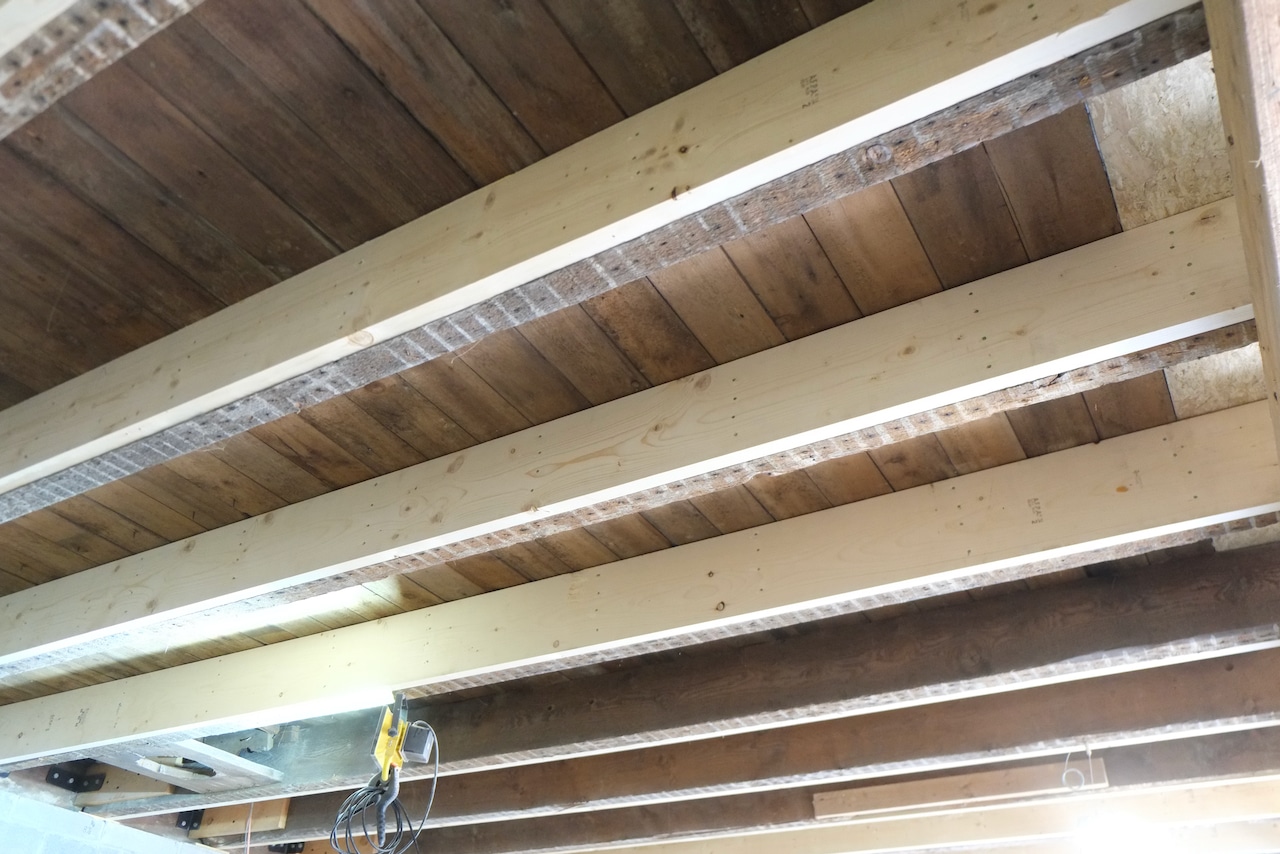If your floor feels like a trampoline or slants toward one side, your joists may need reinforcement — and that’s where sistering comes in.
Sistering is a time-tested method used by handymen, remodelers, and flooring contractors to fix sagging, warped, or undersized floor joists — without tearing out the existing structure. It’s clean, smart, and highly effective — especially in homes built across Orange County, Los Angeles, and the Inland Empire between the 1950s and 1980s.
🧱 What Is Sistering?
Sistering means attaching a new piece of lumber (usually a 2×6, 2×8, or 2×10) directly to the side of an existing joist. The goal is to:
- Reinforce a weak or sagging joist
- Restore level across a span
- Support heavier flooring or remodeling loads
The sister board shares the load, adds strength, and—when installed correctly—brings the floor back to level.
🛠️ When to Sister Joists
We recommend sistering when:
- A floor sags in the middle of the room
- Joists are cracked or warped but still usable
- A room will soon receive tile, hardwood, or custom flooring
- You’re finishing a space (e.g., attic or 2nd story)
- You’re correcting a visible slope in a raised foundation home
We used this exact method during a La Habra Heights project where a second-story master bedroom and bath had dipped about 3/4″ in one corner. By sistering 2x8s and leveling to the high point with a laser, we restored the floor — no demo below required.
🔧 How the Process Works
- Assess the Existing Joists
- Identify sagged or undersized spans
- Determine if full-length or partial sisters are needed
- Locate the High Point
- Use a laser level to map the ideal finished height
- Cut, Position, and Clamp
- Cut the new lumber (same or stronger grade)
- Clamp alongside old joist
- Jack slightly if needed to bring low point up
- Glue and Fasten
- Apply construction adhesive along the old joist
- Fasten with structural screws or nails every 12–16″
- Repeat as Needed
- Continue across the affected area
- Add cross-bracing or blocking if required
🧠 Tips from the Field
- Use PT lumber only if working near crawl space moisture
- When raising a sagged joist, lift gradually and check adjacent drywall for stress
- Combine sistering with 1-1/8” subfloor sheathing for max strength and flatness
- Avoid cutting or notching near the center of the span — it weakens the joist
📚 Want to Go Deeper?
- 👉 0201 – How to Level a Sagging Second Story Floor Without Tearing Everything Apart
- 👉 0203 – Understanding Joist Sag: Why Your Floor Bounces or Feels Uneven
- 👉 0205 – When to Add Crawl Space Supports Under Your Raised Foundation Floor
- 👉 0206 – How to Use a Laser Level to Find the Highest and Lowest Points in a Room
🌍 Serving All of Southern California
Whether your home is in Orange County, Pasadena, Whittier, or Riverside, our team can help reinforce your floors the smart way. Sistering is often cheaper and cleaner than full structural replacement — and we’ve made it part of our signature floor-leveling approach.



Leave a Reply